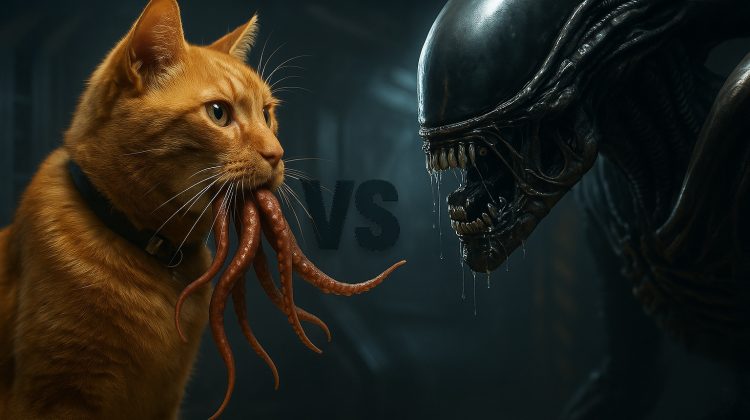
When we talk about “sci-fi cats,” we’re not just talking about cute companions. We’re talking about felines that warp culture, bend physics, chew scenery (sometimes literally), and remind us why this genre thrives on the unexpected. These five vetted cats (pun-adjacent?) not only left a lasting impact on us as the audience and demonstrated the true power of being underestimated while adorable, they also significantly influenced their respective stories. Each remains a stand-out character in many respects. Did your feline hero (or villain) make the list? Until you read on, the answer exists in a quantum state of both making the list and not making it.
What Counts as Sci-Fi Anyway?
Science fiction has always been the playground where imagination rubs shoulders with possibility. Arthur C. Clarke famously said, “Any sufficiently advanced technology is indistinguishable from magic.” In other words, the line between fantasy and sci-fi has always been blurry — and as physicist Michio Kaku points out in Physics of the Impossible, what feels impossible today (teleportation, time travel, parallel worlds) might just shift into tomorrow’s “barely plausible.”
#1. Jake (The Cat from Outer Space)
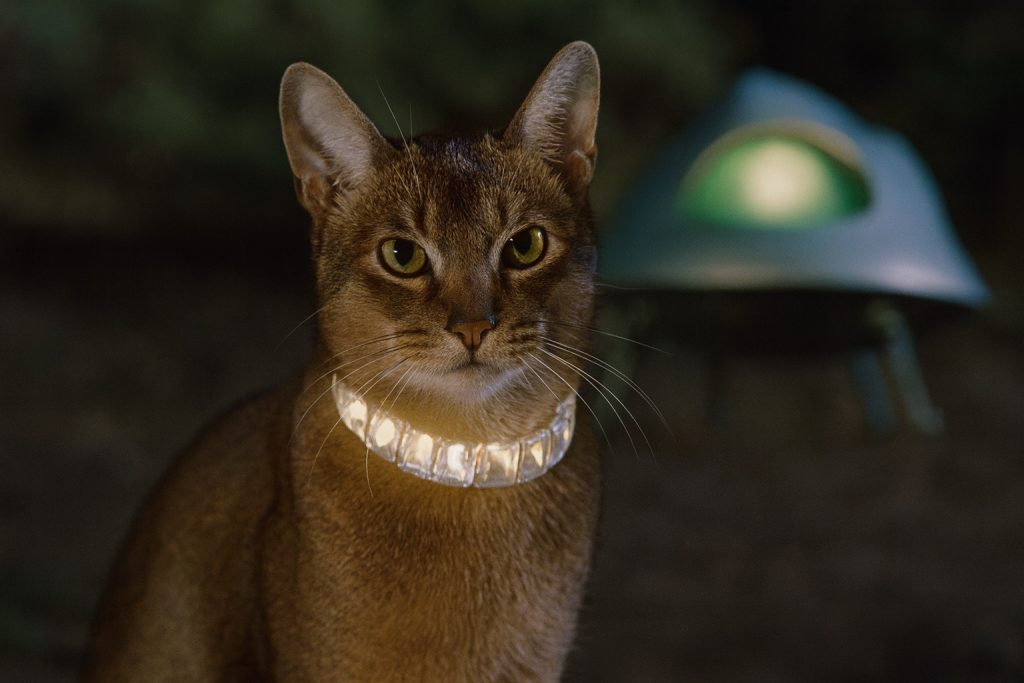
Jake (aka Zunar-J-5/9 Doric-4-7) isn’t just your average house cat — he’s a telepathic alien who crash-lands on Earth in a family-friendly Disney 1978 cult classic. The real kicker? His collar. This glowing piece of alien tech is what lets Jake move objects, repair his ship, and prove he’s far more than an Earthbound mouser.
- Cultural Weight: A campy but beloved entry in the “cats as aliens” trope.
- Cool Factor: That collar instantly upgraded him from “fluffy stowaway” to legit spacefaring badass.
- Impact: Jake set the stage for later alien cats in pop culture by showing that sometimes the cat is literally the most advanced being in the room.
#2. Goose the Flerken (Captain Marvel)
On the surface, Goose looks like just another ginger tabby. Scratch that surface (carefully), and you’ve got a Flerken: an alien species with pocket dimensions in its body and a set of Lovecraftian tentacles waiting to unleash. Goose doesn’t just spice up Carol Danvers’ journey — this cat swallows the Tesseract whole.
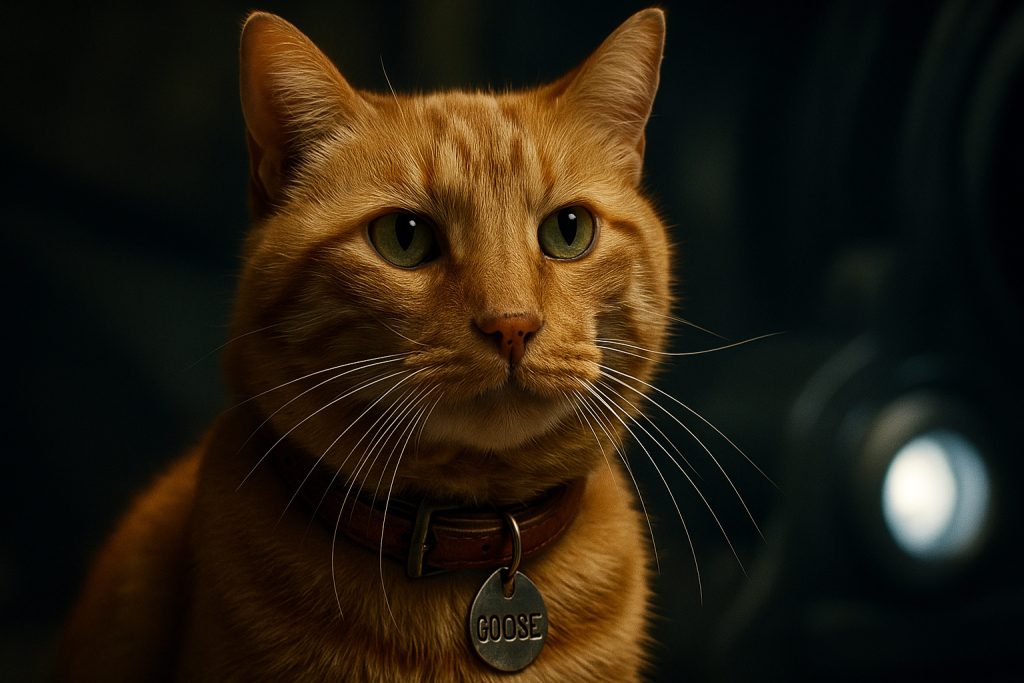
- Cultural Weight: From comics to the MCU, Goose became an instant meme factory. Plushies, Funko Pops, cosplays — you name it, Flerken fever hit.
- Cool Factor: Watching hardened S.H.I.E.L.D. agents recoil while this “cat” devours enemies was peak geek hilarity.
- Impact: Reinforced one of geekdom’s favorite truths: never underestimate a cat.
#3. Jonesy / Jones (Alien)
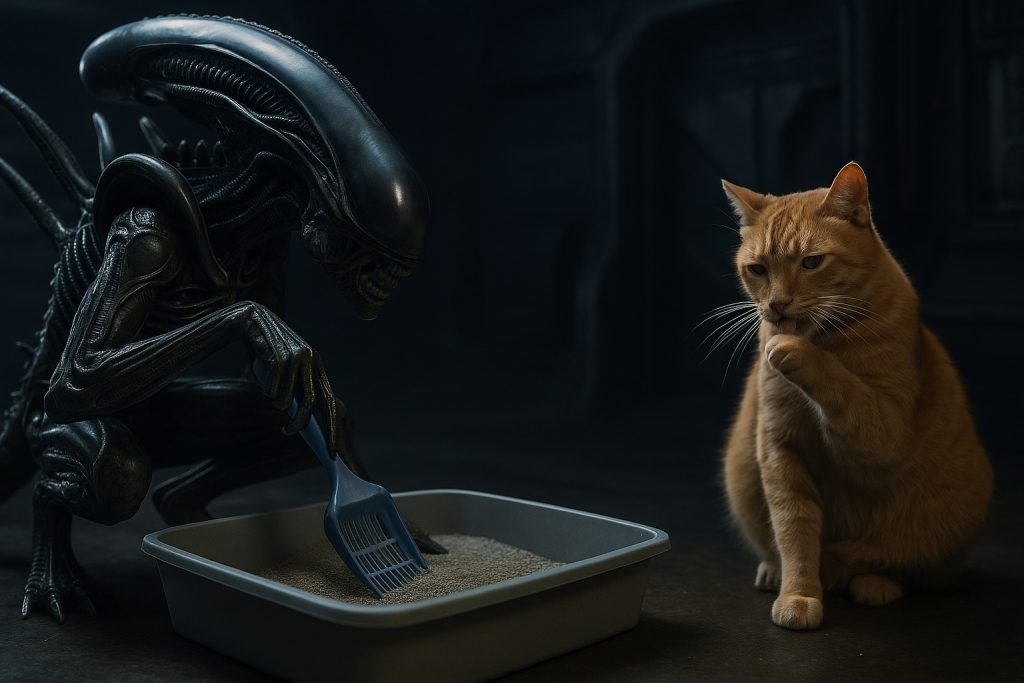
Better known as “Jones” or “Jonesy,” this orange tabby has one job: survive the Alien franchise. And he does it better than most of the crew of the Nostromo. Whether tucked safely in his stasis pod or hissing at the lurking Xenomorph, Jonesy became an anchor for Ripley’s humanity in the middle of deep-space terror.
- Cultural Weight: A horror icon in his own right, still referenced by fans at cons, in memes, and in endless “Would Jonesy survive?” debates.
- Cool Factor: The bravest coward in sci-fi.
- Impact: Jonesy didn’t change the plot, but he changed the tone — horror hits harder when even the cat is scared.
#4. Spot (Star Trek: The Next Generation)
Data’s cat Spot is more than a recurring pet; Spot is a mirror. Through his attempts to care for Spot, the android Data wrestles with affection, responsibility, and what it means to be alive. Spot even earns an ode in the form of Data’s hilariously awkward poem, “Ode to Spot.”
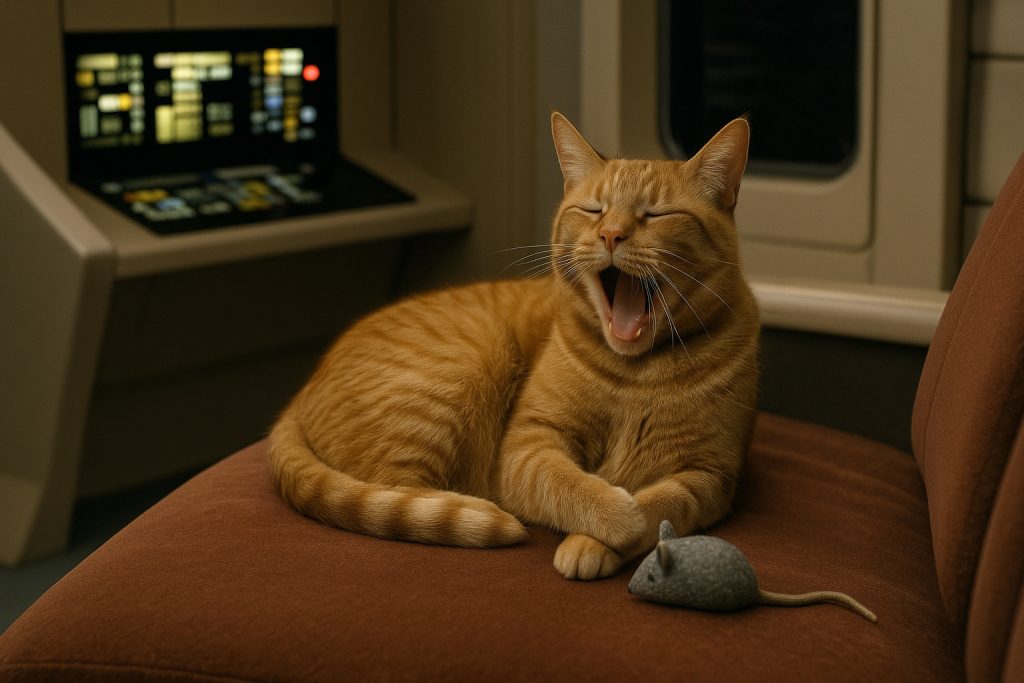
- Cultural Weight: A quiet but lasting Trek symbol of empathy and AI’s search for humanity.
- Cool Factor: Spot scratched Worf and survived. Enough said.
- Impact: Spot helped humanize an android, turning a cold sci-fi question into warm, messy reality.
#5. Pete / Petronius the Arbiter (The Door into Summer)
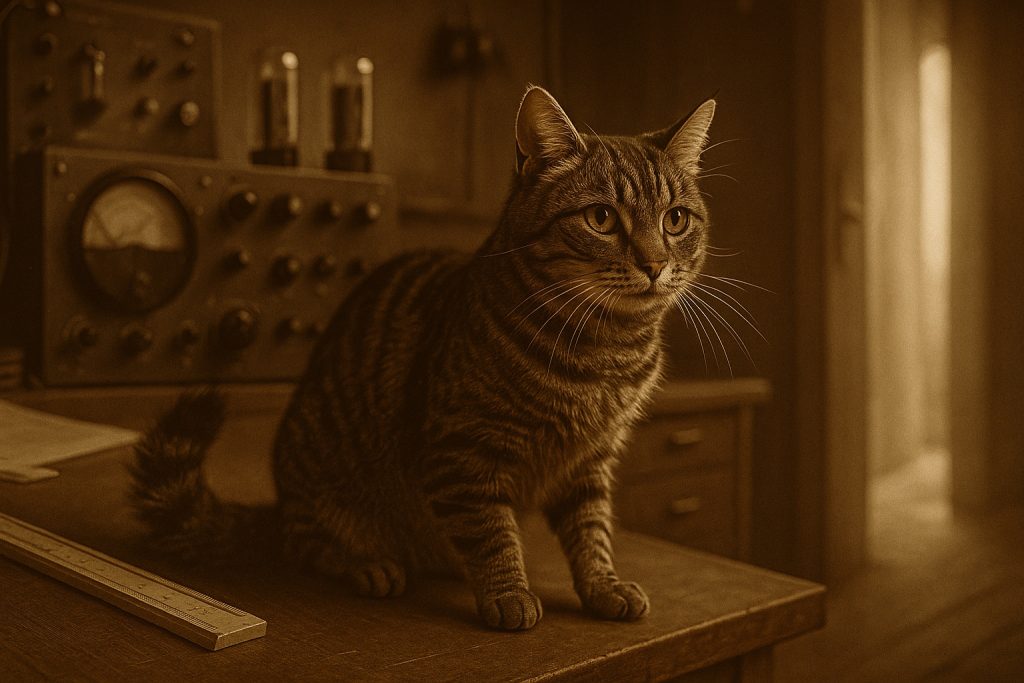
Heinlein’s time-travel novel gave us Pete, a cat whose devotion and quirks keep the story grounded while the protagonist Daniel Boone Davis ricochets through betrayal, cryogenics, and alternate realities. Pete isn’t just window dressing; he’s the emotional tether that keeps the book from floating into pure theory.
Warning: this book is not for the faint of heart. Minimal blood and gore, but this is NOT a cheerful look into the future.
- Cultural Weight: Pete embodies why Heinlein’s work resonates: weaving the fantastical with the familiar. Fans still point to him as proof that a loyal cat can be the beating heart of a hard sci-fi classic.
- Cool Factor: Pete’s “door into summer” gag of scratching at every door until he finds the one that leads to sunshine became a metaphor that lives on in fan conversations today.
- Impact: Pete is the grounding force in a story about futures and possibilities, reminding us that sci-fi’s boldest leaps still need something warm and real at their center.
Honorable Mentions
- Schrödinger’s Cat (1935, thought experiment): Not fictional, but a science icon that’s become sci-fi shorthand for “reality is weird.”
- Kzinti (Larry Niven’s Known Space, 1966+): Aggressive cat-like aliens that expanded into Star Trek and other sci-fi.
- Pixel (The Cat Who Walks Through Walls): A feline who can apparently slip through solid matter and bend physics like Schrödinger’s box was a scratching post. Heinlein leaves the explanation deliciously vague, blending quantum theory with literary whimsy. For a deeper dive, check out the excellent Great Lakes Geek Review.
- Bastet & Stargate Aliens (1997+): Egyptian mythology dressed in sci-fi robes — another sign that fantasy and sci-fi often share the same litter box.
- “Catspaw” Giant Cat (Star Trek: TOS, 1967): A towering black cat controlled by alien sorcerers. Cheesy? Absolutely. But memorable.
From Space Collars to Pocket Dimensions to Quantum Reality
Sci-fi cats aren’t just cute; they’re story-shaping forces, fan obsessions, and cultural icons. Whether you’re reciting Ode to Spot or hunting down a dusty Heinlein paperback, these cats prove one thing: in sci-fi, felines in a scene are never mere plot devices; they’re influencing events and chaos by batting around whatever the story has on the table… and sometime testing gravity and the fabric of reality in the process.
Leave a Reply